
- Email info@sacollegeforwomen.in
- Telephone+91 (0)4565-283273

The college was started in June 1962 under the jurisdiction of Madras University. Since 1962, world history was taught as are of the subjects in part III for the Pre- University Course. Miss. Usha Rajan was the first teacher who served as Lecturer of history in the academic year 1962 – 1963.
In 1963, with the opening of the B.A class with Branch IV under part III economics as major, teaching history as ancillary was started. Miss. T. Malarmagal served as the Lecturer in the academic year 1964 – 1965.
In July 1966, Tamil was introduced as the medium of instruction in the Pre-University Class (Humanities section History). Since July 1965 to September 1967, Miss.L. Visalakshi served in this institution as Lecturer in history. Next who served in this department was Mrs. Jeyamani Narasinham in the academic year 1968-1969. Miss. S. Indirani joined the department in June 1969. Mrs. A. Angayarkanni began her service in June 1971.
In July 1973, B.A. History as a major with Economics and Geography as ancillaries was started. Miss. S. Indirani was upgraded as the department. She had been as the H.O.D. till her retirement on 31st July 1994. She got her degree of Doctor of philosophy in 1988.
Mrs. D. Soundram joined the department in July 1973 as a Lecturer in Geography.
Miss. R. Lakshmi was appointed as a Lecturer in History on 19th June 1974.
Miss. N. Sundara Bharathi joined the department in July 1975 as a Lecturer in history.
Modern Governments was introduced as ancillary instead of Economics in the year 1985-1986.
Mrs.A. Angayarkanni served as the H.O.D from August 1994 to August 2004, till her retirement(V.R.S), Miss.R.Lakshmi was designated as H.O.D on 14th August 2004.
Miss.N.Sundara Bharathi got retirement(V.R.S) on 28th October 2006.
Dr.Mrs.V.Roja was joined the department in December 2007 as a Assistant Professor in history. She got her degree of Doctor of Philosophy in 2004.
Dr.S.Renukadevi was appointed as a Assistant Professor in history 19th December 2013. She got her degree of Doctor of Philosophy in 2012.
Mrs.R.S. Santhi was appointed as Assistant Professor in history 19th December 2013. She got her Ph.D thesis submission.
Mrs.M.Vimala was appointed as Assistant Professor in history 18th June 2015.
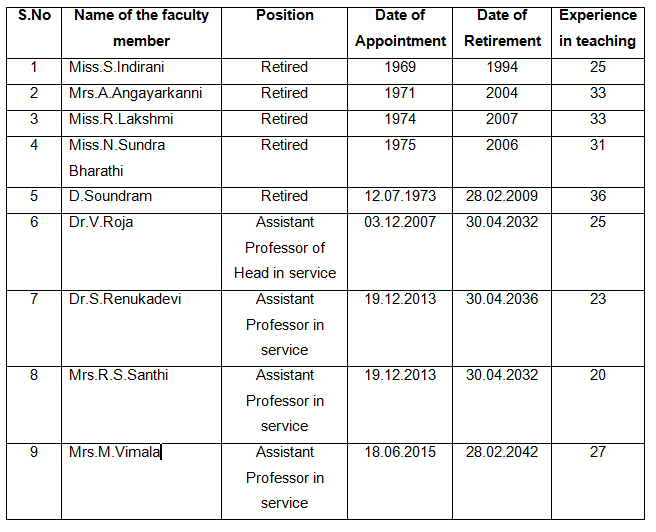
List of Retired Staff Members

Succession List of Heads

The department has been doing its task for a period of one generation, i.e., 46 years (1973-2019) in uplifting the students hailing from rural backround, and it has opened up new vistas of learning and employment opportunities.
Tourism is taught as a special paper which helps the students seeks job in department of Tourism and Travel Agencies. Archaeology and Epigraphy are also taught to the students which helps them seek job in department of Archaeology and Epigraphy. Every year the students are taken to the places archaeological and tourism importance as a part of their field study.
Apart from learning the subjects in curriculum, students are mend to participate in the activities of Association. To enhance their general knowledge the Quiz programmes have been conducted. The students are able to know the current affairs, by taking active participation.
An eminent personalities in nearby colleges are invited to deliver the special lecture. So that the students are shiffed with latest information.
In their long march to train-up the rural students who have opted for higher education and dream of the first degree, the teachers of the department have involved in many committees both inside and outside the college and dedicated to the cause.
Eligibility for Admission
Those students who have passed +2 course are considered as eligible to apply for this course and get admission preferably they must be knowing history and other subject.
List of Students 2012 – 2019
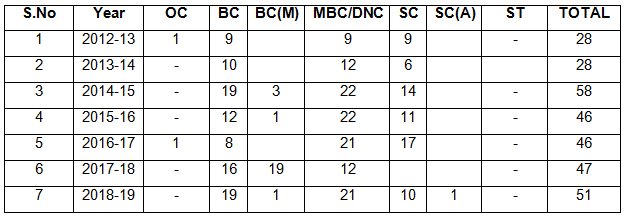
Students Result Particular From 2012 – 2019
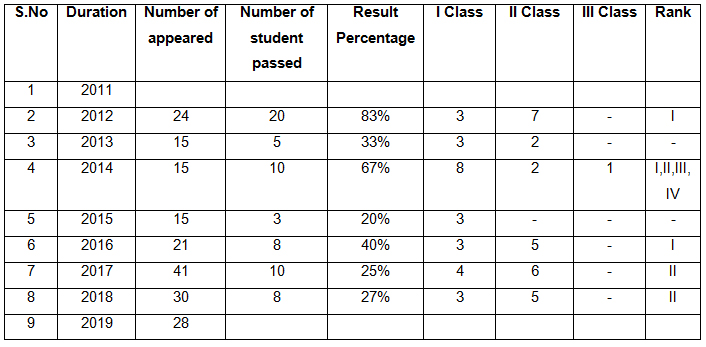
Profile of the Department
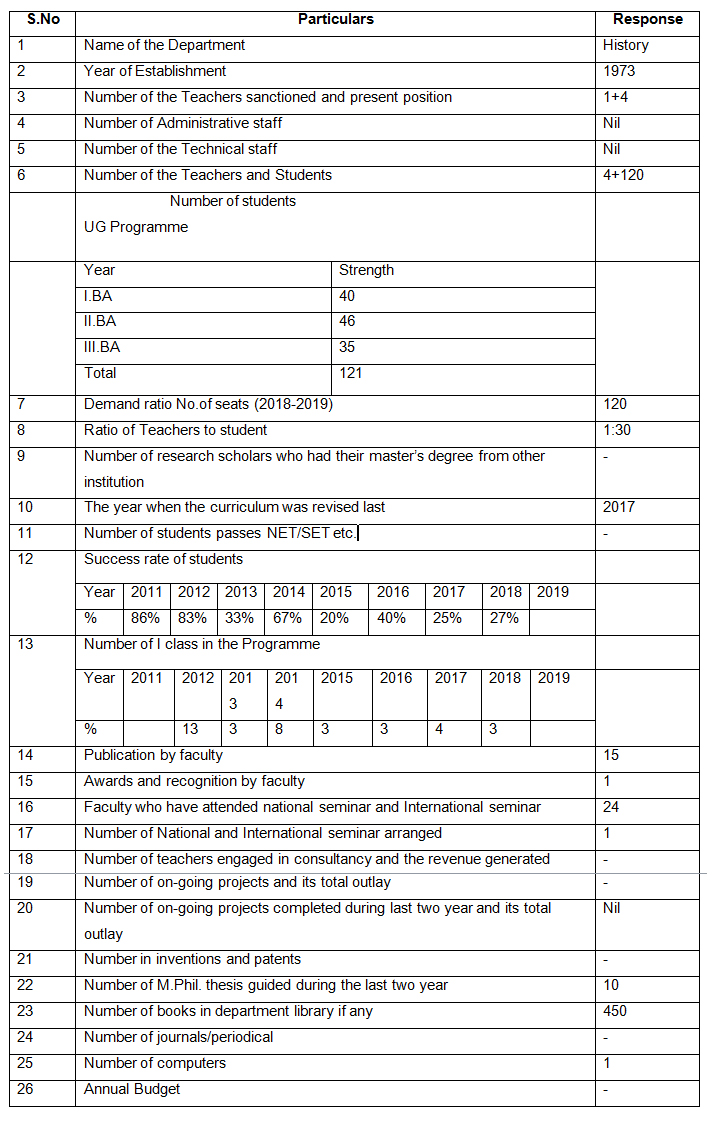
DEPARTMENT INPUT
Inputs from the Departments
| 1. Name and address of the Department | Department of History, Seethalakshmi Achi College for women, Pallathur-630107 |
| 2. Telephone Number | 04565-283273 |
| 3. Date of establishment of the Department | 1973 |
| 4. List the different programmers (Level of study | = Certificate/Diploma/ UG/PG Diploma/PG/M.Phil/Ph.d/Post Doctoral etc.) Offered by the Department together with the details required below: |



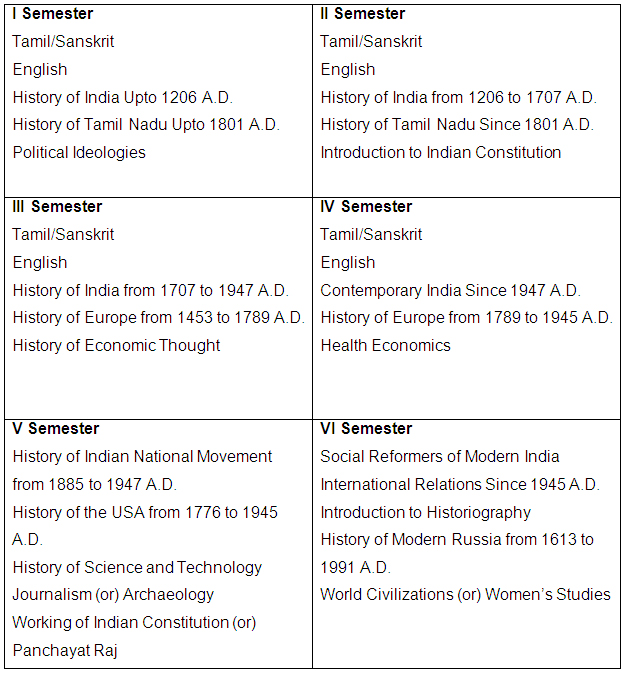
The History Faculty
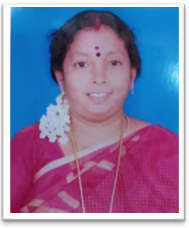
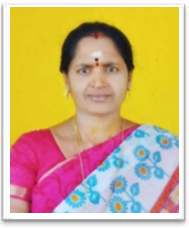
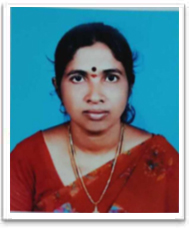
Hard facilities management services includes services like cleaning, plumbing, electrical etc.
Soft services are services that are directly used by the staffs and students can make the workplace more secure or pleasant. They are usually not compulsory and can be removed or added at any time. A few examples of soft services are:
• Building security
• Cleaning
• Aesthetics (decor or landscaping, etc.)
• Mail management
• Individual Library
• Separate class Room
Books in the Department Library : 450
Computers : 1
Printer : 1
Notepad : 1
Projector : 1
Museum
The department has separate museum and library. In the museum have Muthumakal Thaazhi and rare pottery pieces and coins.
Library
The library has around 450 books. These books are available for reference to the staff members as well as the students of this department. These books will enrich the knowledge of our students.
Library Dr.Mrs.S.Renukadevi is the incharge of the Library, Library is very useful to the students and the staff members of the staff. The students also get the books for the reference and for the university examination.
Tutorial cum Remedial Classes
While there is no specific format for tutorial cum remedial classes efforts are taken to help the weaker students, extra classes are conducted and extra coaching is given for the slow learners. Some of the students find it difficult during the initial stages of their semester in taking hints in the class and understanding certain concepts. These students are identified and motivated to attend special coaching classes, after the class hours. Generally the above average students are motivated to take spiral class.
Add on course & Value Add on Course
Add on course & Value Add on Course also conducted by our department
Versatility
History major is a good preparation for many graduate degree and careers such as I.A.S, I.P.S and Law (B.L) and so many competitive examination. The study of those subjects provide job opportunities to get employment in the department of Tourism, Travel Agencies and many public and private sector jobs.
1.History of India
A New History of India is a narrative history directed primarily to the interested general reader and to the beginning college or university student. In it the author surveys the entire course of India’s four-thousand-year history, from the Indus civilization to “Indira Raj,” judiciously balancing his account both geographically and chronologically. For Wolpert the past is indeed prologue: his main purpose is to delineate the historical dimension of certain issues facing present-day India, though he eschews any attempt to offer solutions to these problems. The stress is thus on continuity, on themes such as the recurrent struggle between unitary and divisive tendencies in Indian history. A New History of India is only loosely structured around these major themes, however, and it is largely left to the reader to draw his own conclusions about the historical causes of contemporary problems.
2.History of Tamilnadu
The region of Tamil Nadu or Tamilakam, in the southeast of modern India, shows evidence of having had continuous human habitation from 15,000 BCE to 10,000 BCE. Throughout its history, spanning the early Upper Paleolithic age to modern times, this region has coexisted with various external cultures.
The three ancient Tamil dynasties namely Chera, Chola, and Pandya were of ancient origins. Together they ruled over this land with a unique culture and language, contributing to the growth of some of the oldest extant literature in the world. These three dynasties were in constant struggle with each other vying for hegemony over the land. Invasion by the Kalabhras during the 3rd century disturbed the traditional order of the land, displacing the three ruling kingdoms. These occupiers were overthrown by the resurgence of the Pandyas and the Pallavas, who restored the traditional kingdoms. The Cholas~who re-emerged from obscurity in the 9th century by defeating the Pallavas and the Pandyas, rose to become a great power and extended their empire over the entire southern peninsula. At its height the Chola empire spanned almost 3,600,000 km² (1,389,968 sq mi) straddling the Bay of Bengal. The Chola navy held sway over the Sri Vijaya kingdom in Southeast Asia.
Rapid changes in the political situation of the rest of India occurred due to incursions of Muslim armies from the northwest and the decline of the three ancient dynasties during the 14th century, the Tamil country became part of the Vijayanagara Empire. Under this empire, the Kannada speaking Nayak governors ruled before the European trading companies appeared during the 17th century eventually assuming greater sway over the indigenous rulers of the land. The Madras Presidency, comprising most of southern India, was created in the 18th century and was ruled directly by the British. After the independence of India, after the Telugu and Malayalam parts of Madras state were separated from tamilakam state in 1956, it was renamed as Tamil Nadu in 1969 by the state government.
3. Political Ideologies
A political ideology is a more or less systematic set of ideas that perform four functions for those who hold it: the explanatory, the evaluative, the orientative, and the programmatic functions.
Political ideas play an important role when politicians are to choose, as rationally as possible, means and ends as a basis for their decision-making. But political ideas may also simultaneously serve as a cover-up for hidden private aims, class interests, or goals of party strategy.
A political ideology is a comprehensible set of visions on politics and the role of the government. Steadiness over a wide range of issues is the mark of a political ideology. It was a product of insight by human thinking. It held that the progress of human beings was inevitable. It is believed that all human beings should be viewed to be equal before the law and no one was above the law (Vincent Geoghegan, Rick Wilford, 2014). Furthermore, it supposed that every person was born free and is good in some aspect let alone owning the chance to improve in skills and general thinking. Liberalization expected that all governments were representative of its citizens and not part of the citizens. According to Hansen, Curt & Curtis (2008), this could only be achieved through the freedoms of speech, press, assembly and protection from arbitrary arrest.
4. History of India from 1206 to 1707
The context behind the rise of the Delhi Sultanate in India was part of a wider trend affecting much of the Asian continent, including the whole of southern and western Asia: the influx of nomadic Turkic peoples from the Central Asian steppes. This can be traced back to the 9th century, when the Islamic Caliphate began fragmenting in the Middle East, where Muslim rulers in rival states began enslaving non-Muslim nomadic Turks from the Central Asian steppes,and raising many of them to become loyal military slaves called Mamluks. Soon, Turks were migrating to Muslim lands and becoming Islamicized. Many of the Turkic Mamluk slaves eventually rose up to become rulers, and conquered large parts of the Muslim world, establishing Mamluk Sultanates from Egypt to Afghanistan, before turning their attention to the Indian subcontinent.
5.Introduction to Indian Constitution
The Constitution of India is the supreme law of India. It frames fundamental political principles, procedures, practices, rights, powers, and duties of the government. It imparts constitutional supremacy and not parliamentary supremacy, as it is not created by the Parliament but, by a constituent assembly, and adopted by its people, with a declaration in its preamble. Parliament cannot override it.
The world’s longest constitution is the Indian’s constitution. At its commencement, it had 395 articles in 22 parts and 8 schedules. It consists of approximately 145,000 words, making it the second largest active constitution in the world. Currently, it has a preamble, 25 parts with 12 schedules, 5 appendices, 448 articles, and 101 amendments.
History
The constitution of India was adopted on the 26th of November, in the year 1949. However, it came to effect on the 26th of January, 1950. 26th of January is celebrated as the Republic Day of India.
It was adopted by the Constitution Assembly. Dr. B. R. Ambedkar, the chairman of the Drafting Committee, is widely considered to be the architect of the Constitution of India. After, the adoption of the constitution, The Union of India became the contemporary and modern Republic of India
Fundamental Rights
The Constitution of India provides its citizens with six fundamental rights. These rights are the Right to Freedom, Right to Equality, Cultural and Educational Rights, Right to Constitutional Remedies, Right against Exploitation, Right against Exploitation. Recently, the Right to Privacy has also been added to fundamental rights.
6. History of Europe from 1453 to 1789 AD
The history of Europe covers the peoples inhabiting Europe from prehistory to the present. During the Neolithic era and the time of the Indo-European migrations Europe saw human inflows from east and southeast and subsequent important cultural and material exchange. The period known as classical antiquity began with the emergence of the city-states of ancient Greece. Later, the Roman Empire came to dominate the entire Mediterranean basin. The fall of the Roman Empire in AD 476 traditionally marks the start of the Middle Ages. Beginning in the 14th century a Renaissance of knowledge challenged traditional doctrines in science and theology. Simultaneously, the Protestant Reformation set up Protestant churches primarily in Germany, Scandinavia and England. After 1800, the Industrial Revolution brought prosperity to Britain and Western Europe. The main powers set up colonies in most of the Americas and Africa, and parts of Asia. In the 20th century, World War I and World War II resulted in massive numbers of deaths. The Cold War dominated European geo-politics from 1947 to 1989.
The Rice of Rome
Cicero addresses the Roman Senate to denounce Catiline's conspiracy to overthrow the Republic, by Cesare Maccari
Much of Greek learning was assimilated by the nascent Roman state as it expanded outward from Italy, taking advantage of its enemies' inability to unite: the only challenge to Roman ascent came from the Phoenician colony of Carthage, and its defeats in the three Punic Warsmarked the start of Roman hegemony. First governed by kings, then as a senatorial republic (the Roman Republic), Rome finally became an empire at the end of the 1st century BC, under
Augustus and his authoritarian successors.
The Roman Empire at its greatest extent in 117 AD, under the emperor Trajan
The Roman Empire had its centre in the Mediterranean, controlling all the countries on its shores; the northern border was marked by the Rhine and Danube rivers. Under emperor Trajan (2nd century AD) the empire reached its maximum expansion, controlling approximately 5,900,000 km2 (2,300,000 sq mi) of land surface, including Italia, Gallia, Dalmatia, Aquitania, Britannia, Baetica, Hispania, Thrace, Macedonia, Greece, Moesia, Dacia, Pannonia, Egypt, Minor
Asia, Cappadocia, Armenia, Caucasus, North Africa, Levant and parts of Mesopotamia. Pax Romana, a period of peace, civilisation and an efficient centralised government in the subject territories ended in the 3rd century, when a series of civil wars undermined Rome's economic and social strength.
In the 4th century, the emperors Diocletian and Constantine were able to slow down the process of decline by splitting the empire into a Western part with a capital in Rome and an Eastern part with the capital in Byzantium, or Constantinople (now Istanbul). Whereas Diocletian severely persecuted Christianity, Constantine declared an official end to state-sponsored persecution of Christians in 313 with the Edict of Milan, thus setting the stage for the
Church to become the state church of the Roman Empire in about 380.
7. History of Economic Thought
The history of economic thought deals with different thinkers and theories in the subject that became political economy and economics, from the ancient world to the present day in the 21st Century. This field encompasses many disparate schools of economic thought. Ancient Greek writers such as the philosopher Aristotle examined ideas about the art of wealth acquisition, and questioned whether property is best left in private or public hands. In the Middle Ages, scholasticists such as Thomas Aquinas argued that it was a moral obligation of businesses to sell goods at a just price.[citation needed]
In the Western world, economics was not a separate discipline, but part of philosophy until the 18th–19th century Industrial Revolutionand the 19th century Great Divergence, which accelerated economic growth
8. History of USA
Abraham Lincoln was the 16th president of the United States. He preserved the Union during the U.S. Civil War and brought about the emancipation of slaves.
Abraham Lincoln Facts
Abraham Lincoln (February 12, 1809 to April 15, 1865) was the 16th president of the United States and is regarded as one of America's greatest heroes due to his role as savior of the Union and emancipator of slaves. His rise from humble beginnings to achieving the highest office in the land is a remarkable story.
Lincoln was suddenly and tragically assassinated at a time when his country needed him to complete the great task remaining before the nation. His eloquent support of democracy and insistence that the Union was worth saving embody the ideals of self-government that all nations strive to achieve. Lincoln's distinctively human and humane personality and incredible impact on the nation have endowed him with an enduring legacy.
Abraham Lincoln's Birthday
Abraham Lincoln was born on February 12, 1809, in a log cabin in Hardin County, Kentucky.
Lincoln’s Emancipation Proclamation
On January 1, 1863, Lincoln delivered the Emancipation Proclamation, reshaping the cause of the Civil War from saving the Union to abolishing slavery. The Union Army's first year and a half of battlefield defeats made it difficult to keep up morale and support strong for a reunification of the nation. And the Union victory at Antietam on September 22, 1862, while by no means conclusive, was hopeful, giving Lincoln confidence to officially change the goals of the war.
Lincoln’s Emancipation Proclamation stated that all individuals who were held as slaves in rebellious states "henceforward shall be free." The action was more symbolic than effective because the North didn’t control any states in rebellion and the proclamation didn’t apply to Border States, Tennessee or some Louisiana parishes.
9. Panchayat Raj
In India, the Panchayati Raj generally refers to the system of local self-government in India introduced by a constitutional amendment in 1992, although it is based upon the traditional panchayat system of the Indian subcontinent. This Panchayati Raj system was formalized in 1992, following a study conducted by a number of Indian committees on various ways of implementing more decentralized administration. The modern Panchayati Raj and its Gram Panchayats arenot to be confused with the extra-constitutional Khap Panchayats (or Caste Panchayats) found in northern India.
In India, the Panchayati Raj now functions as a system of governance in which gram panchayats are the basic units of local administration. The system has three levels: Gram Panchayat (village level), Mandal Parishad or Block Samiti or Panchayat Samiti(block level), and Zila Parishad (district level). It was formalized in 1992 by the 73rd amendment to the Indian Constitution. Currently, the Panchayati Raj system exists in all states except Nagaland, Meghalaya, and Mizoram, and in all Union Territories except Delhi.
The Panchayats receive funds from three sources:
• Local body grants, as recommended by the Central Finance Commission
• Funds for implementation of centrally sponsored schemes
• Funds released by the state governments on the recommendations of the State Finance Commissions
10. Social Reforms of Modern India
Social Reform is a kind of social movement that aims to make gradual change, or change in certain aspects of society, rather than rapid or fundamental changes. Areform movement is distinguished from more radical social movements such as revolutionary movements.
Bhimrao Ramji Ambedkar (14 April 1891 – 6 December 1956), popularly known as Babasaheb Ambedkar, was an Indian jurist, economist, politician and social reformer who inspired the Dalit Buddhist movement and campaigned against social discriminationtowards the untouchables (Dalits), while also supporting the rights of women and labour. He was independent India's first law and justice minister, the principal architect of the Constitution of India, and a founding father of the Republic of India. In India and elsewhere, he was often called Babasaheb, meaning "respected father" in Marathi and Hindi.
Ambedkar was a prolific student earning doctorates in economics from both Columbia University and the London School of Economicsand gained a reputation as a scholar for his research in law, economics, and political science. In his early career, he was an economist, professor, and lawyer. His later life was marked by his political activities; he became involved in campaigning and negotiations for India's independence, publishing journals, advocating political rights and social freedom for Dalits, and contributing significantly to the establishment of the state of India. In 1956, he converted to Buddhism initiating mass conversions of Dalits. He died six months shortly after conversion.
In 1990, the Bharat Ratna, India's highest civilian award, was posthumously conferred upon Ambedkar. Ambedkar's legacy includes numerous memorials and depictions in popular culture.
11. International relations Since 1945
International relations (IR) or international affairs (IA) — commonly also referred to as international studies (IS), global studies(GS), or global affairs (GA) — is the study of interconnectedness of politics, economics and law on a global level. Depending on the academic institution, it is either a field of political science, an interdisciplinary academic field similar to global studies, or an entirely independent academic discipline in which students take a variety of internationally focused courses in social science and humanitiesdisciplines. In all cases, the field studies relationships between political entities (polities) such as sovereign states, inter-governmental organizations (IGOs), international non-governmental organizations (INGOs), other non-governmental organizations (NGOs), and multinational corporations (MNCs), and the wider world-systems produced by this interaction. International relations is an academic and a public policy field, and so can be positive and normative, because it analyses and formulates the foreign policy of a given state.
As political activity, international relations dates from the time of the Greek historian Thucydides (c. 460–395 BC), and, in the early 20th century, became a discrete academic field (no. 5901 in the 4-digit UNESCO Nomenclature) within political science. In practice, international relations and international affairs forms a separate academic program or field from political science, and the courses taught therein are highly interdisciplinary..
12. Introduction to Historiography
Herodotus[a] (c. 484 BC – c. 425 BC) was an ancient Greek historian who was born in Halicarnassus in the Persian Empire (modern-day Bodrum, Turkey). He is known for having written the book The Histories (Greek: Ιστορίαι), a detailed record of his "inquiry" (ἱστορίαhistoría) on the origins of the Greco-Persian Wars. He is widely considered to have been the first writer to have treated historical subjects using a method of systematic investigation—specifically, by collecting his materials and then critically arranging them into an historiographic narrative. On account of this, he is often referred to as "The Father of History", a title first conferred on him by the first-century BC Roman orator Cicero.[1]
Despite Herodotus' historical significance, little is known about his personal life. His Histories primarily deals with the lives of Croesus, Cyrus, Cambyses, Smerdis, Darius, and Xerxes and the battles of Marathon, Thermopylae, Artemisium, Salamis, Plataea, and Mycale; however, his many cultural, ethnographical, geographical, historiographical, and other digressions form a defining and essential part of the Histories and contain a wealth of information. Herodotus has been criticized for the fact that his book includes a large number of obvious legends and fanciful accounts. Many authors, starting with the late fifth-century BC historian Thucydides, have accused him of making up stories for entertainment. However, Herodotus states that he is merely reporting what he has been told. A sizable portion of the information he provides has since been confirmed by historians and archaeologists.
13.History of Modern Russia from 1613 to 1991 AD
The history of Russia begins with the histories of the East Slavs, Turkic and the Finno-Ugric peoples.[1][2][3][4] The traditional start-date of specifically Russian history is the establishment of the Rus' state in the north in 862 ruled by Vikings.[5] Staraya Ladoga and Novgorod became the first major cities of the new union of immigrants from Scandinavia with the Slavs and Finno-Ugrians. In 882 Prince Oleg of Novgorod seized Kiev, thereby uniting the northern and southern lands of the Eastern Slavs under one authority. The state adopted Christianity from the Byzantine Empire in 988, beginning the synthesis of Byzantine and Slavic cultures that defined Orthodox Slavic culture for the next millennium. Kievan Rus' ultimately disintegrated as a state due to the Mongol invasions in 1237–1240 along with the resulting deaths of about half the population[citation needed] of Rus'.
14. World Civilization
Mesopotamia is a historical region of Western Asia situated within the Tigris–Euphrates river system, in the northern part of the Fertile Crescent, in modern days roughly corresponding to most of Iraq, Kuwait, the eastern parts of Syria, Southeastern Turkey, and regions along the Turkish–Syrian and Iran–Iraq borders.[1]
The Sumerians and Akkadians (including Assyrians and Babylonians) dominated Mesopotamia from the beginning of written history (c. 3100 BC) to the fall of Babylon in 539 BC, when it was conquered by the Achaemenid Empire. It fell to Alexander the Great in 332 BC, and after his death, it became part of the Greek Seleucid Empire.
Around 150 BC, Mesopotamia was under the control of the Parthian Empire. Mesopotamia became a battleground between the Romans and Parthians, with western parts of Mesopotamia coming under ephemeral Roman control. In AD 226, the eastern regions of Mesopotamia fell to the Sassanid Persians. The division of Mesopotamia between Roman (Byzantine from AD 395) and Sassanid Empires lasted until the 7th century Muslim conquest of Persia of the Sasanian Empire and Muslim conquest of the Levant from Byzantines.
15. Contemporary India since 1947 AD
Indira Priyadarshini Gandhi was an Indian politician, stateswoman and a central figure of the Indian National Congress. She was the first and, to date, the only female Prime Minister of India. Indira Gandhi was the daughter of Jawaharlal Nehru, the first prime minister of India.
Association
We are having History Association every year. We used to conduct the Inaugural function with an eminent person to deliver a lecture in different topics related to History and other related subject.
Apart from the History Association, we involved the various departmental activities such as quiz programmes, field visit and educational tour etc.
Our staff and the students participate in various seminar, workshop which are conducted by the various colleges and university.
| S.No. | Year / Date | Chief Guest Name & Address | Topic |
|---|---|---|---|
| 1 | 01.02.2012 | Prof.I.Nilofer Begum M.A., M.Phil., Assistant Professor of History, Alagappa Government Arts College, Karaikudi |
“The importance and value of European History” |
| 2 | 04.01.2013 | Prof.Mr.V.Gunasekaran, M.A., M.Phil., Assistant Professor of History, Alagappa Govt. Arts and Science College, Karaikud |
“The Importance and Proverb of the History”. |
| 3 | 11.02.2015 | Dr.M. Palaniappan M.A., M.Phil., Associate Professor of Tamil, Government Arts College, Paramakudi |
“Tamil Sangam in Madura” |
| 4 | 11.02.2016 | Dr. D. Paul Suyambu, M.A., M.Phil., PhD., Assistant Professor of History, R.D.M. College, Sivaganga |
“Contribution of History in competitive Examinations”. |
| 5 | 06.09.2016 | Prof. P. Velayutha Raja M.A.M.Phil., Ph.D., Assistant prof of History, V.S.S.Govt. Arts college. Poolankurichi |
“Let us love history” |
| 6 | 03.02.2018 | Prof.K. Thirugnanam M.A., M.Phil.,Ph.D., Ret. Professor History, C.Kandaswamy Naidu College for Women, Cuddalore-1 |
“Importance of the History”. |
| 7 | 28.09.2018 | Prof.S.Kannan, M.A., Ph.D., Assistant Professor History, R.D.M Govt. Arts College, Sivaganga |
“ The Temple History of Tamil Nadu” |
Parents Teachers Meeting
PTA Meeting was conducted on various years our H.O.D Dr.V.Roja welcomed the parents and advised the students. University results were informed to the parents. Dr.S.Ramuthai, Principal gave important suggestion for the improvement of studies and motivated the students to complete their degree with high percentage then interaction between staff members and parents were taken place.
| S.No. | Date | No.of Students Presented | No.of Parents Participated |
|---|---|---|---|
| 1 | 22 July 2012 | 62 | 40 |
| 2 | 03 May 2013 | 53 | 30 |
| 3 | 21th Feb 2014 | 56 | 35 |
| 4 | 11th Feb 2015 | 92 | 52 |
| 5 | 23rd July 2016 | 104 | 63 |
| 6 | 21th August 2017 | 106 | 67 |
| 7 | 15th Feb 2018 | 103 | 56 |
| 8 | 14th September 2018 | 98 | 72 |
At the end of the meeting all the parents recorded their views about the department and college. They were satisfied with teachers effort in the welfare of their children.
Academic Achievements:
The effectiveness of teaching-learning process in this department is clearly proved by the rank holders of B.A examination of the Alagappa University as presented below:
Alagappa University Rank Holders
| S.No. | NAME OF RANK HOLDERS | RANK POSITION | YEAR |
|---|---|---|---|
| 1. | S. Kalpana | I | 2012 |
| 2. | - | - | 2013 |
| 3. | V. Priyanga | I | 2014 |
| 4. | S.P. Karpagam | II | 2014 |
| 5. | M. Benazeer Begam | III | 2014 |
| 6. | KR. Thavaseelam | IV | 2014 |
| 7. | - | - | 2015 |
| 8. | G. Priyanga | I | 2016 |
| 9 | A.Ramya | II | 2017 |
| 10 | S.Sakthidevi | II | 2018 |
• The prize winner of the competitions K. Indhusa III B.A History won the III prize in drawing competition.
• K.Indhusa III B.A History participated in “Kanitamil Payilarangu” and got the certificate.
• K.Indhusa III B.A History has passed the examination on “My Experiments with Truth “ held on 30.01.2019 and has been graded in second class and got the certificate.
• N.Rathna Prabha participated in NCC Anual Training Camp at Periyar Maniammai Institute of Science & Technology, Vallam (Thanjavur).
Sports
Every year our students have participated and owned the prizes in Long – Jump, High Jump, Badminton, Kho-Kho and Kabbadi competitions in intercollegiate Tournaments conducted by Alagappa University and Madurai Kamaraj University as presented below.
| S.No. | NAME | EVENT | PLACE SECURED | YEAR | VENUE | PLACE |
|---|---|---|---|---|---|---|
| 1 | D.Saranya | High-Jump | III | 2012-13 | Seethalakshmi Achi College for Women | Pallathur |
| 2 | S.Nandhini A.Kasthuri V.Nithya K.Girija |
400 meter Relay | I | 2014-15 | Seethalakshmi Achi College for Women | Pallathur |
| 3 | S.Ilakkiya | Carrom | I | 2014-15 | Seethalakshmi Achi College for Women | Pallathur |
| 4 | KR.Meenakshi | Chess | I | 2015-16 | Seethalakshmi Achi College for Women | Pallathur |
| 5 | A.Kanimozhi | 200 meter dash | III | 2015-16 | Seethalakshmi Achi College for Women | Pallathur |
| 6 | A. Kanimozhi | 400 meter running | I | 2015-16 | Seethalakshmi Achi College for Women | Pallathur |
| 7 | M.Kowsalya | Javelin throw | I | 2015-16 | Seethalakshmi Achi College for Women | Pallathur |
| 8 | M.Kowsalya | Javelin throw | I | 2016-17 | Seethalakshmi Achi College for Women | Pallathur |
| 9 | V.Arthy | 100 meter athletic | I | 23.02.2017 | Seethalakshmi Achi College for Women | Pallathur |
| 10 | G.Ramya | 100 meter athletic | III | 23.02.2017 | Seethalakshmi Achi College for Women | Pallathur |
| 11 | V.Arthy | 200 meter athletic | II | 23.02.2017 | Seethalakshmi Achi College for Women | Pallathur |
| 12 | K.Indhumathi | 200 meter athletic | III | 23.02.2017 | Seethalakshmi Achi College for Women | Pallathur |
| 13 | K.Indhusa | 200 meter dash | III | 2016-2017 | Seethalakshmi Achi College for Women | Pallathur |
| 14 | S.Jayalakshmi | Long Jump | I | 2018-19 | Seethalakshmi Achi College for Women | Pallathur |
| 15 | S.Jayalakshmi | 4×100 meter relay | III | 2018-19 | Seethalakshmi Achi College for Women | Pallathur |
| 16 | K.Indhusa | 200 meter dash | III | 2018-2019 | Seethalakshmi Achi College for Women | Pallathur |
Extension Activities
The extension activities programme was designed in the curriculum of Alagappa University to give an awareness about the socio – economic status of people in near by villages. The students have collected datas regarding the financial & educational status of the family and the availability of schools, bus, medical and telecommunication services and water facilities. The performance of the ward with family members was assessed based on their interaction with villagers, attitude towards work, participation, interaction and discussion and knowledge of problems.
| S.No. | Date | Place | No.of Students Participated |
|---|---|---|---|
| 1 | 20.09.12 | Pillaiyarpatti | 24 |
| 2 | 19.10.13 | Alagarkoil | 17 |
| 3 | 09.04.14 | Thirumayam Fort | 22 |
| 4 | 25.05.15 | Nemathanpatti | 47 |
| 5 | 07.10.16 | Solaiyandavar temple | 38 |
| 6 | 13.10.17 | Kotthari | 33 |
| 7 | 08.10.18 | Kanadukathan | 35 |
Feature Plan of the Department:
• To introduce PG Programme in History.
• To organise a State level seminar.
• Workshop is to be organized by getting grant from UGC-ICHR.
• Smart class room is to be established.
• Existing museum will be renovated.
• A Copier Machine (Xerox) will be purchased.
• To improve the knowledge of the students internet facilities will be provided.
• Proposed to conduct a special coaching class for competitive examinations etc.,
• To organize a field trips to historical sits.
• To improve pass percentage of students in the University Examination.
• To strengthen the extension activities.